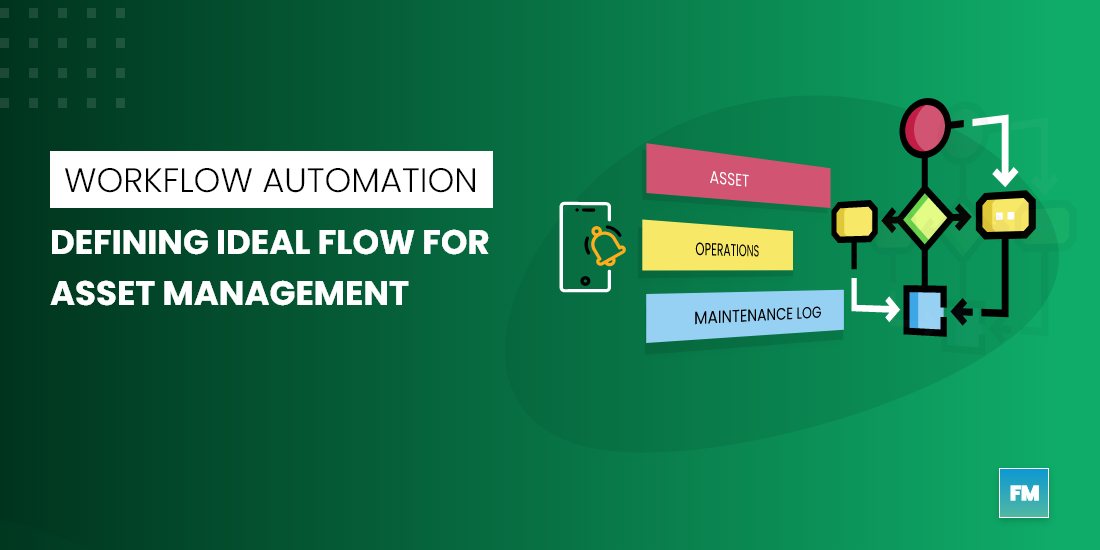What comes to mind when one comes across a workflow management application for facility management? It should be a customer-facing application for creating support tickets, managing work orders, centralizing all work requests on a central platform for quick access, etc. Well, It’s all true but not complete. The concept is not new to the FM industry in fact, workflow automation software have been in use in IT, banking, and SaaS-based firms for a long time and they have been using it to streamline their external as well as internal processes.
Workflow automation puts critical functions of the facility management on autopilot mode, It simplifies complex procedures which include condition-based Maintenance/Monitoring into a set of chain actions reducing human intervention. For example, if an air handling unit’s fan is taking more current than expected value (statistically driven calculation) then it will alert the operator to check the filter or take appropriate action.
However, when it comes to asset management or maintenance schedules, we have rarely explored the possibilities and opportunities of asset-based workflow automation for the operations and maintenance team. It’s far from a crude concept of managing a maintenance calendar or setting up an alert on an asset set point condition.
The current state of FM automation software
Nowadays, facility management teams have multiple options to build their technology stack that includes data collection sensors, processing, and cloud storage and finally, the user interface application for visualization and reporting either for O&M teams or the tenants. Teams can choose asset performance management software and CMMs/CAFM from the different vendors and work with both of them simultaneously.
But then are few challenges there,
- Obviously, the level of integration and inter-application communication can be challenging as both the applications would want to build their own set of modules for critical functions.
- The functionality of creating a ‘trigger then, that’ condition can be limited and only applies to a fixed set of assets.
- Takes a lot of time to set up and synchronize different applications at a new site. A user would usually need to create ‘If conditions’ from the scratch.
With all these limitations, It becomes very difficult to pinpoint an Ideal application or software that has overcome these. But in a true sense if we want to define a set of functionalities that can be exhibited in workflow automation software specifically for managing the asset performance then it should be comprehensive for all asset class and logic types.
Ideal Workflow:
In terms of steps, It should look like this
- The O&M engineer or facility manager can log in to the application and select the asset on which we would like to set up a condition. So there would be a list of assets available for consideration.
- Select the condition based trigger template from the library. Once the asset has been selected he can choose the list of parameters he would like to track for the desired condition. at the same time, he would also set up a condition/ trigger /logic for the same. (ideally, the user should have ready-made libraries to select the condition template so that can easily select the appropriate)
- The next step would be selecting a time-frequency he would want the logic to run or scan the data, for example, check the inlet airflow once in every 10 min and trigger if the system finds an outlier when another logic also satisfies.
- The fourth step would be to choose a medium for notification/alerts to appear as the O&M team might be using other CAFM or CMMS application. This is where the pre-configured integration would come into the picture as an operator would receive the notification in his CAFM application’s inbox or his preferred communication medium such as slack, WhatsApp ore even Microsoft teams.
- Closing the loop: this would be the last step once an operator receives a notification he also gets the recommendation to take corrective action so that he does not need to go back to his data bank/ BMS for rechecking.
In this entire process, an application can achieve four critical functionalities or could be considered as benefits to the facility manager.
- It streamlines complex conditions that are otherwise difficult to track manually. An O&M operator can not monitor every asset parameter all the time even on operator-specific dashboards. Such an application can set up multiple ‘If-then’ conditions and notify on every desired stage.
- Since there is no manual intervention chances of errors and delay are very low. The facility manager can maintain transparency in asset performance monitoring.
- Inter application communication: This is perhaps a very important and critical aspect for uninterrupted operations. As we are moving ahead to the multi-family technology stack it becomes a crucial part of managing data/ insight flow on different platforms/applications without losing the gist. This gives the ability to complete the loop from a different application.
- Ready to use templates: user can save his setup condition or flow in a template library so that he can apply the same flow to other assets. This is also a useful feature to a first time user at a new facility as he gets the list of ready to use templates to set up a flow.
In terms of savings, facility management teams can save a lot of time and effort of the operators and engineers by automating critical functions. By scanning, segmenting, and filtering all the asset and operations-related data, workflow automation software lets FM teams focus on implementing insights.
Now, wouldn’t that be an interesting value proposition to have all the benefits in a single application? What’s your experience with workflow automation software before? Anything else that you would like to see in it?
Share your thoughts with us.

Leave a Reply